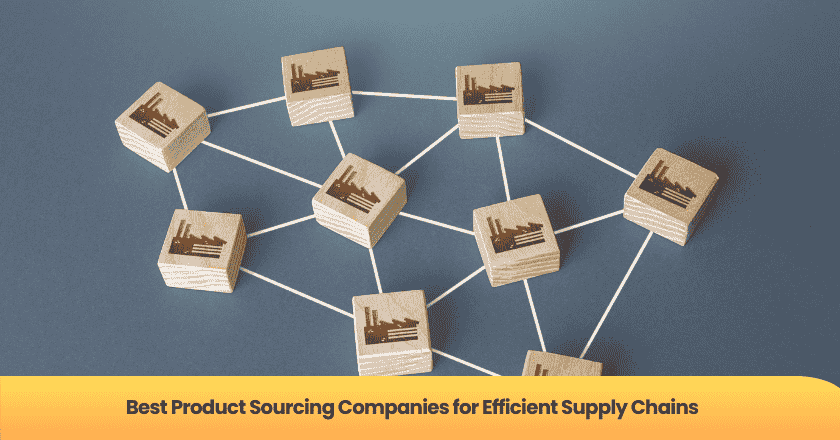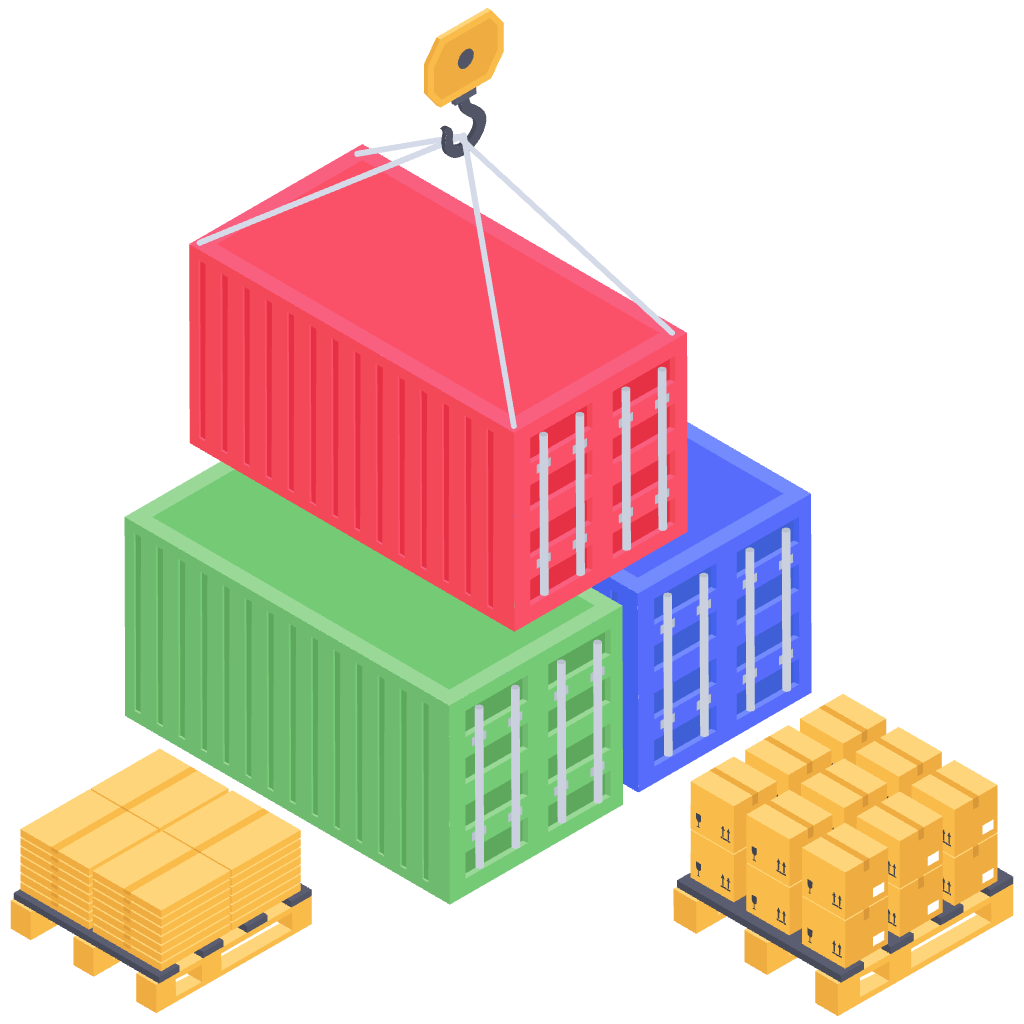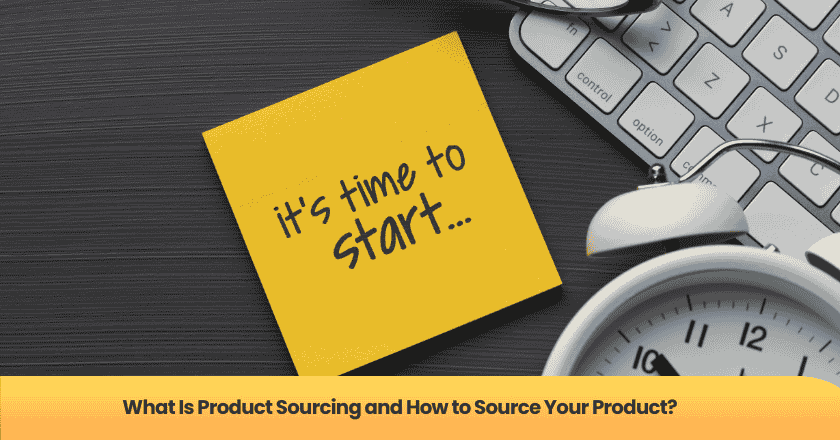
Choosing the right product sourcing companies shapes your supply chain's efficiency. You gain more control over reliability, speed, and cost-effectiveness when you invest time in research. Consider these points:
- A reliable supplier often delivers faster but might raise costs.
- Lower-cost suppliers can save money, yet they may increase risks.
- The balance between supplier dependability and price affects your marketing and overall performance.
You need to devote consistent research to find partners who support your business goals. Strong research skills help you compare options, reduce risks, and adapt to changing markets. Every research effort brings you closer to a more resilient supply chain.
Key Takeaways
- Choose reliable suppliers to enhance speed and control in your supply chain.
- Invest time in research to find partners that align with your business goals.
- Effective product sourcing can lead to significant cost savings and improved quality.
- Evaluate sourcing companies based on transparency, delivery capabilities, and technical expertise.
- Build strong supplier relationships to ensure long-term success and resilience in your supply chain.
Why Product Sourcing Matters
Business Impact
You face many challenges when you make poor product sourcing decisions. These challenges can disrupt your entire ecommerce operation and affect your position in international supply chains. You may notice issues such as:
- Ineffective vendor communication
- Supply risk and disruptions
- Dark purchasing and inaccurate data
- Increased costs and lower quality goods
- Operational inefficiencies and bottlenecks
- Missed opportunities for innovation and growth
If you manage supply chain management poorly, you risk higher costs and lower quality. These problems can slow down your business and make it harder for amazon sellers to compete. You need to focus on building strong supplier relationships and maintaining accurate data. This approach helps you avoid administrative headaches and keeps your ecommerce business agile.
Tip: Consistent attention to supply chain management helps you spot risks early and respond quickly to market changes.
Key Benefits
Effective product sourcing gives you a competitive edge in ecommerce. You can shorten your supply chain, which reduces lead times and allows you to respond faster to customer demand. This flexibility is crucial for amazon sellers who want to launch products quickly and keep inventory levels low.
You also gain several advantages when you use professional sourcing services:
- Improved quality and access to advanced technologies
- Increased efficiency and process control
- Significant cost savings, including up to 70% on labor and an average 19% reduction in operational expenses
- Enhanced ability to pursue innovation and adapt to new trends
Supply chain management becomes more strategic when you align sourcing with your business goals. You can take advantage of discounts, warranties, and better pricing. This approach helps amazon sellers grow and stay competitive in the fast-paced world of ecommerce.
Top Product Sourcing Companies
Comparison Overview
You want to work with product sourcing companies that deliver consistent results and adapt to changing market demands. In 2025, the best product sourcing platforms stand out for their ability to manage complex supply chains, offer specialized services, and leverage technology for efficiency. These companies excel in areas such as global reach, project management, and supplier relationships. They also provide additional services like quality control, logistics management, and ethical sourcing solutions.
1. NewBuyingAgent
Fields & Strengths: With 30 years of trade, manufacturing, and quality control expertise, NewBuyingAgent delivers next-generation sourcing solutions. Key strengths include AI-driven product intelligence (free market analysis via big data for high-demand product selection/design), a 30-year network of 50,000+ factories (reducing sourcing costs by 5–10% to boost margins), end-to-end quality management across China via 20,000+ product development/QC experts (full coverage for quality issues to mitigate buyer risk), and flexible payment terms with tailored credit periods to support cash flow.
Industries & Cases: Delivers 8%-20% total sourcing cost savings—achieved through 5-10% reduced FOB purchase costs plus 3-10% lower inspection expenses. Offers full compensation for quality issues and assumes end-to-end responsibility for the entire process.
2. Source One
Fields & Strengths: With over 30 years of experience in Asian manufacturing procurement, Source One excels at navigating market fluctuations and economic dynamics by building long-term trust with suppliers to optimize supply chains.
Industries & Cases: Serving sectors such as consumer goods and industrial components, the company offers end-to-end services from supplier qualification audits to post-sales support. For example, it designed a customized Asian supply chain solution for an international brand, reducing costs by 18% while improving on-time delivery rates to 95%.
3. Dragon Sourcing
Fields & Strengths: Specializing in emerging market sourcing strategies, Dragon Sourcing leverages its global office network (China, Southeast Asia, Latin America) to integrate local resources and manage risks effectively.
Industries & Cases: Covering electronics, textiles, and machinery, the company developed a Vietnam sourcing plan for a European importer, leveraging local cost advantages to boost product gross margins by 22% and assisting in obtaining BSCI social compliance certification.
4. Imex Sourcing
Fields & Strengths: Headquartered in Guangzhou, Imex Sourcing focuses on meeting the needs of Amazon FBA sellers and cross-border e-commerce brands, providing comprehensive procurement services including factory audits, price negotiations, and logistics tracking.
Industries & Cases: Deeply rooted in home goods and 3C electronics, the company helped an Amazon seller launch 12 new products within six months. By optimizing supplier selection, it reduced per-unit procurement costs by 15% and shortened new product launch cycles by 40%.
5. Sourcify
Fields & Strengths: Connecting e-commerce brands with high-quality factories in Asia, Sourcify simplifies production tracking through its digital platform, lowering procurement barriers for small and medium-sized enterprises.
Industries & Cases: Serving fashion and home goods industries, the company matched a startup brand with a Southeast Asian apparel supplier compliant with EU standards, supporting small-batch orders (MOQ 500 units) and assisting in OEKO-TEX certification. This helped the brand achieve over $3 million in first-year sales.
6. Asia Caixin Co., Ltd. (OZEOL)
Fields & Strengths: As a procurement subsidiary of a French chain discount group, OZEOL specializes in acquiring surplus inventory and has 38 years of global stock liquidation experience, covering EU-compliant merchandise.
Industries & Cases: Focusing on kitchenware, toys, and home goods, the company once helped a European retailer liquidate 200,000 units of out-of-season sporting goods. Through its rapid cash transaction model, it completed inventory turnover within 30 days, recovering over €5 million in funds for the client.
Note: The best product sourcing companies combine these strengths to deliver value across every stage of your supply chain.
You will notice that the most effective product sourcing platforms integrate technology into their operations. Artificial intelligence processes large data sets, automates supplier monitoring, and identifies unique sourcing opportunities. These platforms use AI-driven eSourcing tools to automate vendor selection, provide real-time comparisons, and recommend the best options for your needs. Technology also supports sustainability by promoting eco-friendly practices and improving transparency.
Recent trends in the industry include a shift toward local sourcing, increased focus on sustainability, and the use of collaborative forecasting with suppliers. You benefit from platforms that adapt quickly to geopolitical changes and macroeconomic challenges by diversifying supply chains and merging financial data into procurement decisions.
Selection Criteria
When you evaluate product sourcing companies, you need to focus on criteria that directly impact your supply chain's efficiency and resilience. The following table outlines the most important factors to consider:
| Criterion | What to Look For | Why It Matters |
|---|---|---|
| Cost structure | Transparent pricing, volume discounts, payment terms | Affects budgeting and financial planning |
| Quality standards | Certifications, quality control processes, samples | Ensures consistent product/service quality |
| Delivery capabilities | On-time delivery record, logistics network | Prevents production delays and stockouts |
| Technical expertise | Industry experience, specialized knowledge | Supports innovation and problem-solving |
| Financial stability | Credit ratings, financial statements | Reduces risk of vendor bankruptcy or disruption |
You should also keep these points in mind when choosing among product sourcing platforms:
- Transparent cost structures help you plan your budget with confidence.
- Certifications and quality control processes guarantee consistent product quality.
- Reliable delivery capabilities prevent costly production delays.
- Technical expertise supports your business as you innovate and grow.
- Strong financial stability reduces the risk of supply chain disruptions.
Product sourcing companies that excel in these areas will help you build a resilient and efficient supply chain. The best product sourcing platforms also manage risk by diversifying suppliers, maintaining buffer stock, and using technology for real-time visibility. You gain peace of mind knowing your partners have contingency plans and focus on sustainability.
Tip: Choose platforms that align with your business goals and adapt quickly to changes in the global supply chain landscape.
Product Sourcing Models
You have several options when you choose how to source products for your ecommerce business. The two most common models are dropshipping and traditional sourcing. Each model shapes your supply chain efficiency and growth potential in unique ways.
Dropshipping
Dropshipping allows you to sell products without holding inventory. You list items on your ecommerce platforms, and when a customer places an order, your dropshipping suppliers ship the product directly to the buyer. This model offers flexibility and low upfront costs. You can start a dropshipping business with minimal capital, making it attractive for new entrepreneurs.
Dropshipping companies often provide automation tools that streamline order processing and inventory management. AI-powered dropshipping services increase efficiency by targeting the right products and automating fulfillment. You can scale your dropshipping website quickly, but you may face high competition and lower profit margins. Traditional dropshipping requires large sales volumes to generate significant income, while AI-driven dropshipping can boost profits with fewer sales, especially for high-ticket items.
Here is a quick overview of the main advantages and disadvantages of dropshipping for supply chain management:
| Advantages | Disadvantages |
|---|---|
| Lower capital investment | High levels of competition |
| Low barriers to entry | Differentiation challenges |
| Flexibility | Profit margin pressure |
| Scalability | Less control over product quality |
| Customer dissatisfaction |
Shipping times also matter. Traditional dropshipping companies often struggle with longer delivery periods, which can frustrate customers. AI-powered dropshipping partners help you offer faster shipping, improving satisfaction and retention.
Best Dropshipping Sites
When you search for the best dropshipping sites, focus on platforms that offer a wide range of high-quality products and reliable dropshipping suppliers. The top dropshipping companies provide extensive product catalogs, fast shipping, and seamless integration with ecommerce platforms. You want a dropshipping website that supports automated fulfillment and offers educational resources for all experience levels.
- The best dropshipping sites feature large supplier directories, ensuring you access high-quality products and reliable fulfillment.
- Leading dropshipping companies offer fast shipping options, which help you meet customer expectations.
- A strong dropshipping website provides training, support, and automation, making it easier to manage your dropshipping business.
- Look for dropshipping companies that integrate with popular ecommerce platforms and offer scalable solutions as your business grows.
Tip: Choose dropshipping sites that align with your business goals and provide robust support for your ecommerce operations.
Evaluating Sourcing Partners
Reliability
You need reliable sourcing and fulfillment companies to maintain a strong supply chain. Reliability starts with consistent product quality and on-time delivery. When you evaluate a supplier, you should review their financial health and relationship dynamics. Strong communication and cultural alignment help you avoid misunderstandings. Risk management also matters. You want suppliers who have business continuity plans and comply with regulations. The table below highlights key factors for assessing reliability:
| Factor | Description |
|---|---|
| Quality | The quality of products or services is crucial; poor quality can lead to higher costs and delays. |
| Delivery Reliability | Timely delivery is essential for operations; assess on-time performance and flexibility. |
| Financial Health | A supplier's financial condition indicates long-term viability; review financial statements. |
| Relationship Dynamics | Strong relationships enhance collaboration; consider communication and cultural alignment. |
| Risk Management | Identifying risks is vital; evaluate business continuity plans and compliance with regulations. |
You should focus on these factors when you choose u.s.-based sourcing companies for dropshipping or traditional ecommerce operations. Reliable suppliers help you avoid costly disruptions and keep your business running smoothly.
Cost
Cost plays a major role in your decision-making process. You want sourcing and fulfillment companies that offer transparent pricing and volume discounts. U.s.-based sourcing companies often provide clear payment terms, which help you manage your budget. You should compare costs across multiple suppliers to find the best value. Dropshipping can reduce upfront investment, but you must watch for hidden fees. Efficient supplier discovery helps you identify partners who balance cost and quality. Always review financial statements and payment histories before you commit.
Tip: Choose suppliers who provide detailed quotes and avoid vague pricing structures. This approach protects your margins and supports long-term growth in ecommerce.
Scalability
Scalability determines how well your supply chain adapts to growth. U.s.-based sourcing companies excel when they handle large order volumes and respond quickly to changes. Dropshipping platforms offer flexibility, but you must monitor metrics like defect rate, lead time variability, and fill rate. The table below shows important metrics for assessing scalability:
| Metric | Definition | Importance |
|---|---|---|
| Defect Rate | Percentage of defective units received. | Ideal should be below 1% to ensure quality. |
| Lead Time Variability | Fluctuation in order placement to delivery time. | High variability can disrupt planning and increase inventory costs. |
| Compliance Rate | Frequency of supplier compliance with regulations. | Non-compliance can lead to fines and brand damage. |
| Fill Rate | Percentage of customer demand fulfilled from available inventory. | Low fill rates can result in lost revenue and customer trust. |
| Supplier Responsiveness | Speed and effectiveness of supplier responses. | Quick responses indicate reliability, crucial in global sourcing. |
| Inventory Turnover | Frequency of inventory sold and replaced. | High turnover indicates efficiency, while low turnover ties up capital. |
| Supplier Capacity Utilization | Ratio of actual output to maximum possible output. | Ideal utilization is 70-90% to ensure supplier reliability. |
| Sustainability Metrics | KPIs measuring environmental and social impact. | Important for brand reputation and stakeholder expectations. |
You should select suppliers who meet these standards. This strategy ensures your dropshipping business can scale without bottlenecks.
Geographic Reach
Geographic reach affects how you manage supply chain challenges. U.s.-based sourcing companies often excel in technology adoption and skill development across regions. You must understand regional differences in risk management and sustainability. Companies in North America usually have formal risk strategies, while other regions may lag behind. You need to consider national and regional differences to compete in fast-changing markets. Dropshipping platforms with broad geographic reach help you serve customers worldwide and adapt to local regulations.
- Geographic reach influences supply chain optimization and collaboration.
- Regional differences in risk management and sustainability impact your sourcing decisions.
- U.s.-based sourcing companies with global networks support dropshipping and ecommerce growth.
Note: Always verify that your suppliers comply with international trade regulations. Look for sourcing and fulfillment companies that monitor regulatory changes, assess legal risks, and provide import assistance. This approach keeps your dropshipping business compliant and competitive.
Choosing the Right Company
Assessing Needs
You need to start by understanding your business requirements before selecting a sourcing partner. Clear goals help you avoid common pitfalls, such as misalignment or focusing only on short-term savings. When you define your needs, you set the foundation for a successful partnership in dropshipping or ecommerce.
- Provide detailed specifications when you request product samples.
- Label sample packages with 'no commercial value' to avoid unnecessary duty charges.
- Request a company tag and model number for easy identification during testing.
- Sample products to assess quality before making a commitment.
- Source locally when possible to reduce costs and improve delivery times.
- Work with multiple suppliers to build resilience in your dropshipping supply chain.
You should also follow these steps:
1. Establish communication requirements, including your preferred modes and frequency.
2. Verify production capacity to ensure the manufacturer can meet your needs.
3. Check the manufacturer's experience and equipment for expertise.
4. Set a price that fits your budget and expectations.
5. Select a manufacturer that matches your unique needs and quality standards.
Many businesses make the mistake of starting the supplier selection process without clearly defining their needs. This often leads to misalignment and operational issues.
Comparing Services
When you compare sourcing companies, you need to look beyond price. Leading dropshipping partners offer tailored solutions that fit your business model. They act as facilitators, connecting you with reliable manufacturers and providing services such as market analysis, quality control, compliance assurance, and logistics management.
- Sourcing companies do not produce goods; they connect you with suitable manufacturers.
- They offer bespoke services, including product development customization and quality assurance.
- Their main role involves identifying and vetting manufacturers, assessing reliability, and managing contracts.
- They oversee logistics, ensuring timely and cost-effective delivery for your dropshipping business.
You should also consider environmental and ethical factors. Ethical sourcing practices protect workers’ rights and promote sustainability. Certifications like Fair Trade and Forest Stewardship Council support responsible sourcing and environmental protection.
Building Partnerships
Long-term success in dropshipping and ecommerce depends on strong supplier relationships. You need to focus on collaboration, transparency, and continuous improvement. The table below highlights best practices for building lasting partnerships:
| Best Practice | Description |
|---|---|
| Clear Communication & Transparency | Set expectations for quality, delivery, and pricing to prevent misunderstandings. |
| Establishing Trust & Reliability | Honor commitments and address issues promptly to build trust. |
| Long-Term Collaboration | Focus on long-term goals to foster innovation and stability. |
| Performance Tracking & Feedback | Monitor supplier performance and provide regular feedback. |
| Fair & Win-Win Agreements | Negotiate fair terms to ensure sustainability for both parties. |
| Leveraging Technology | Use digital tools to improve efficiency and reduce risks in supplier management. |
Successful supplier negotiations require thoughtful preparation and a clear understanding of your objectives. You should balance cost efficiency with quality and always aim for win-win outcomes.
Selecting the best product sourcing company shapes your supply chain’s success. Start by following these steps:
- Assess production capacity and scalability.
- Verify quality certifications like ISO 9001.
- Use third-party inspection for quality checks.
- Discuss lead times and production schedules.
- Understand internal quality control.
- Negotiate MOQs and pricing.
- Identify risks and plan mitigation.
Match your needs with partner strengths:
- Evaluate supplier capabilities for your requirements.
- Negotiate terms that support your strategy.
- Consider local sourcing for speed and reliability.
- Work with multiple suppliers to reduce risk.
| KPI | Description |
|---|---|
| On-Time Delivery Rate | Percentage of orders delivered on time |
| Defect Rate | Percentage of defective products received |
| Order Accuracy | Accuracy of fulfilled orders |
| Lead Time | Time from order to delivery |
| Communication & Responsiveness | Effectiveness of supplier communication |
| Flexibility | Ability to adapt to changes |
| Quality of Goods | Overall quality of supplied products |
| Cost Performance | Cost-effectiveness of supplier offerings |
Take time to align your business goals with the right sourcing partner. Review these steps regularly to keep your supply chain efficient and resilient. For deeper insights, consult with supply chain professionals or continue your research.
FAQ
What is the main advantage of using a product sourcing company?
You gain access to a network of vetted suppliers. This approach saves you time and reduces risk. You can focus on your core business while experts handle supplier selection, negotiation, and quality control.
How do you evaluate the reliability of a sourcing partner?
You should review delivery records, quality certifications, and financial stability. Ask for references and check their communication style. Reliable partners provide clear timelines and respond quickly to your questions.
Can you switch sourcing models as your business grows?
Yes, you can start with dropshipping and move to traditional sourcing when order volumes increase. This flexibility allows you to scale operations and control costs as your business evolves.
What risks should you watch for in global sourcing?
You face risks like shipping delays, regulatory changes, and quality issues. Monitor supplier performance and stay updated on international trade rules. Diversify suppliers to reduce the impact of disruptions.
How do you ensure ethical sourcing practices?
You should request proof of certifications and audit reports. Work with partners who follow fair labor standards and environmental guidelines. Regularly review supplier compliance to maintain ethical standards.
Get Started Today
Let's Turn Your Sourcing Goals into RealityWeChat:+86 15157124615
WhatsApp:+86 15157124615
Address:Building 10 #39 Xiangyuan Road, Hangzhou, China




